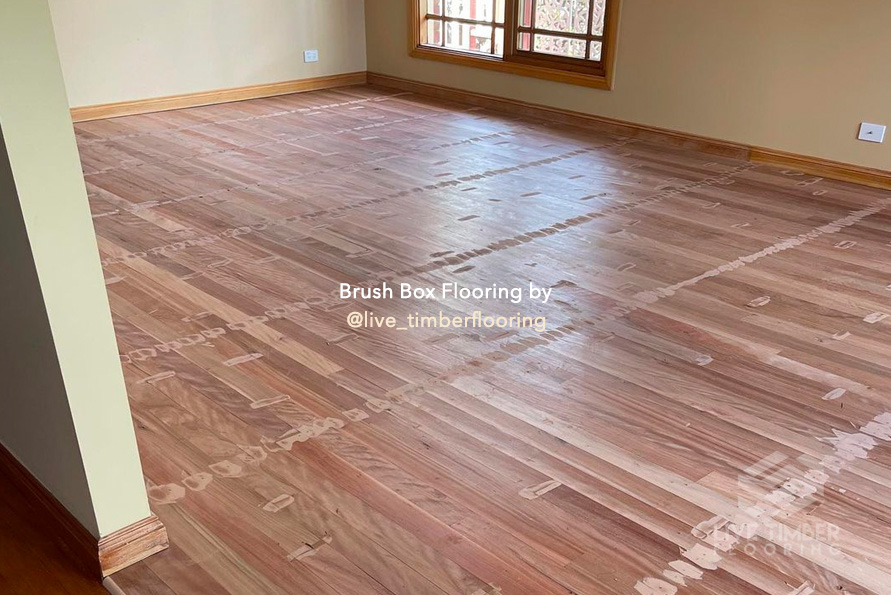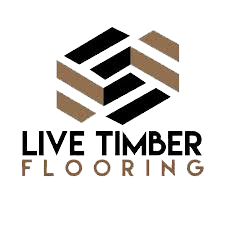
When deciding on hardwood installation (especially installing Solid Hardwood Over Plywood) you may encounter many questions, from how it is installed and how much it costs to what type of hardwood flooring you should choose.
We, at Live Timber Flooring – your local flooring installation services in Melbourne, try to answer your questions in regards to floorboard installation which the answers might help you make a better decision, arrange tasks and perhaps save time and money. While we are sharing with you some thoughts from expericne please make sure you consult floor specialists before any actions.
Planning to Install Hardwood Floors yourself?
Yes you can plan to do it yourself (DIV)! But making this decision really depends on the types of flooring and how handy-man or handy-woman you are.
While solid hardwood floorings are notoriously hard to install, most of the time you can install factory finished floorings yourself.
They don’t need sanding and finishing as well as a skilled professional. In any case, you’ll need the right tools and a good instruction manual.
Underlay for Floating Floorboards
In the case of floating flooring or Engineered Flooring Installation Method Floating System, an underlayment is a must. It allows the flooring to float and gives the flooring stability and support.
An underlayment reduces the sound and heat from flooring and creates support for the locking system too.
Thanks to the underlayment floating floorings can be installed in wet rooms and where the temperature fluctuates more.
The Easiest Flooring to Install
Peel-and-stick vinyl flooring tiles are the most DIY-friendly type of flooring. The tiles are self-adhesive and you only need to remove the protective layer and stick them on the sub-flooring. You don’t need any special tool for installation, just a tape measure and chalk to measure your room and find the room centre as well as a utility knife to cut tiles.
Are Hardwood Floors Hard to Install?
The range of difficulty involved in installing hardwood flooring varies from a fairly easy DIY project to a professional carpentry project that requires a bit of skill and experience. Laminate flooring is the easiest to install. It’s an easy DIY project and you can lock the flooring without glues or nails.
On the other edge of the spectrum is solid hardwood flooring which is the most difficult to install. Although you can install solid flooring yourself, you’d better hire a professional to do the job for you. The installation process usually requires special tools such as a nailer and sanding drum and some carpentry skills to look good.
How Long Until You Can Walk on New Floorboards
If you are installing prefinished floorboards, you will able to walk on the flooring as soon as the installation is finished.
However, if you are using raw timber planks you should leave the home while the installation process is going on and wait until the paint and polish cures. This can take up to 5 days.
Can I use timber flooring in the bathroom or kitchen?
Solid timber flooring is not the best option for a bathroom or where water is ubiquitous. Besides, timber could become slippery when wet which is a potential risk for families with kids or pets. In a bathroom or laundry room, we recommend using laminate or vinyl flooring instead.
The flooring in the kitchen needs to be hard and waterproof. Pots can fall, spills can happen and always a lot of traffic in and out. So, timber flooring is not the greatest flooring options for a kitchen. If you insist, choose a species that is very hard wearing and coat with a water-proof finish on top.
Painting Timber Flooring
Yes, solid timber flooring is commonly painted, stained and coated with compatible paints and polishes. The most commonly used paint and coat type is polyurethane but some wood species with high oil content may need special treatment. Before painting floorboards make sure that the surface is clean and free from contaminates. Some household products such as silicon or cooking oils can make reactions with paints and coatings.
Install timber flooring on plywood
Yes, you can install timber flooring on plywood. There are three reasons for using plywood as sub-flooring. Firstly, it helps protect flooring from concrete moisture. Secondly, it supports thinner floorboards and thirdly, it compensates the imperfections in the concrete surface.
How many times can a timber floor be sanded and finished?
A high-quality timber flooring can be sanded and refinished up to 5 times, but it totally depends on how is it and how it’s manufactured. The denser floorboards are they can be sanded and coated more. A well-manufactured timber flooring should be able to be withstand sanding and finishing 2-3 times during its lifespan.
How Long Does It Take to Install A Timber Floor?
When using pre-finished timber flooring the installation is quick, easy and clean. The time needed to finish the job varied with home size. Some small home can be done in a day, others could take up to a week.
Onsite sanding and finishing is a much more timely process. For an average-sized home, It usually takes a week to install the flooring, and you should wait another 5-7 days until the flooring completely dries.
Do I Have to Leave My House When Installing Timber Floorboards؟
In the case of pre-finished flooring not at all. The flooring planks are sanded and polished at the factory and can be installed by just gluing down. The glue used may make a faint smell on the first day as it’s drying. But as the glue manufacturers claim, it could be classified as food grade. So, there is no need to move out, which is a huge advantage.
On the other hand, onsite finishing is a noisy process and make a lot of dust and mess. Your family should leave the home while the job is going on and you cannot move in until the flooring completely dries. This could take up to a week. So, it’s not the options for busy families.
Can I Install Timber Flooring Over Underfloor Heating?
Because wood conduct heats well, holds the warmth produced and radiates heat into the room, timber flooring is considered a good option for installing over both hydronic or electric underfloor heating system. The natural ability of wood to heat up quickly and resist heat from escaping too quickly helps to maximize the energy efficiency of the underfloor heating system.
When installing a timber flooring overheating system, you should make attention to the level of the finished flooring. It’s very difficult to install timber flooring on a very uneven heating system.
Can I lay timber floor over tiles?
Yes, you can lay timber over tiles but this involves some potential risks:
If the tiles come to lose moisture from sub-flooring can cause damage to the flooring.
The tiles are rarely perfectly flat, so your timber may have some hollow sounding areas.
Sometimes the glue used doesn’t bond well to the surface of the tile.
In most cases, it’s better to wipe out the surface of tiles with a methylated spirit and give it a light finish before timber flooring. This will ensure that the surface is flat and the timber flooring will bond well to the sub-flooring.
Will a Hardwood Flooring Increase the Value of My Home?
Yes, hardwood flooring is not only durable and elegant but it’s considered the best investment decision on flooring. A hardwood flooring will increase the resale value of your home and make it look more luxurious.

